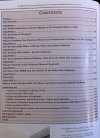Chris Veitch
Western Thunderer
I see that Lightmoor are advertising a January 2024 reissue of their Brendon Hills and West Somerset Book. West country mineral lines are a sometime interest of mine, so I've been mightily tempted based on the couple of sample images showing very modellable and Riceian 19th Century industrial railways, but although from the description it certainly seems to be a well-researched and comprehensive book it's not clear how much covers mining and local history, and how much is detailed railway history. Is there anyone here who owns the earlier printing and can provide an idea of its content and how much of it is likely to excite a student of antiquated industrials?
P.S. I notice that the book is advertised as "The Brendon Hills Iron Mines and the West Somerset Railway" whereas the cover images show it as "The Brendon Hills Iron Mines and the West Somerset Mineral Railway", which seems an odd oversight from a specialist publisher since the WSR and WSMR are rather different things...
P.S. I notice that the book is advertised as "The Brendon Hills Iron Mines and the West Somerset Railway" whereas the cover images show it as "The Brendon Hills Iron Mines and the West Somerset Mineral Railway", which seems an odd oversight from a specialist publisher since the WSR and WSMR are rather different things...


